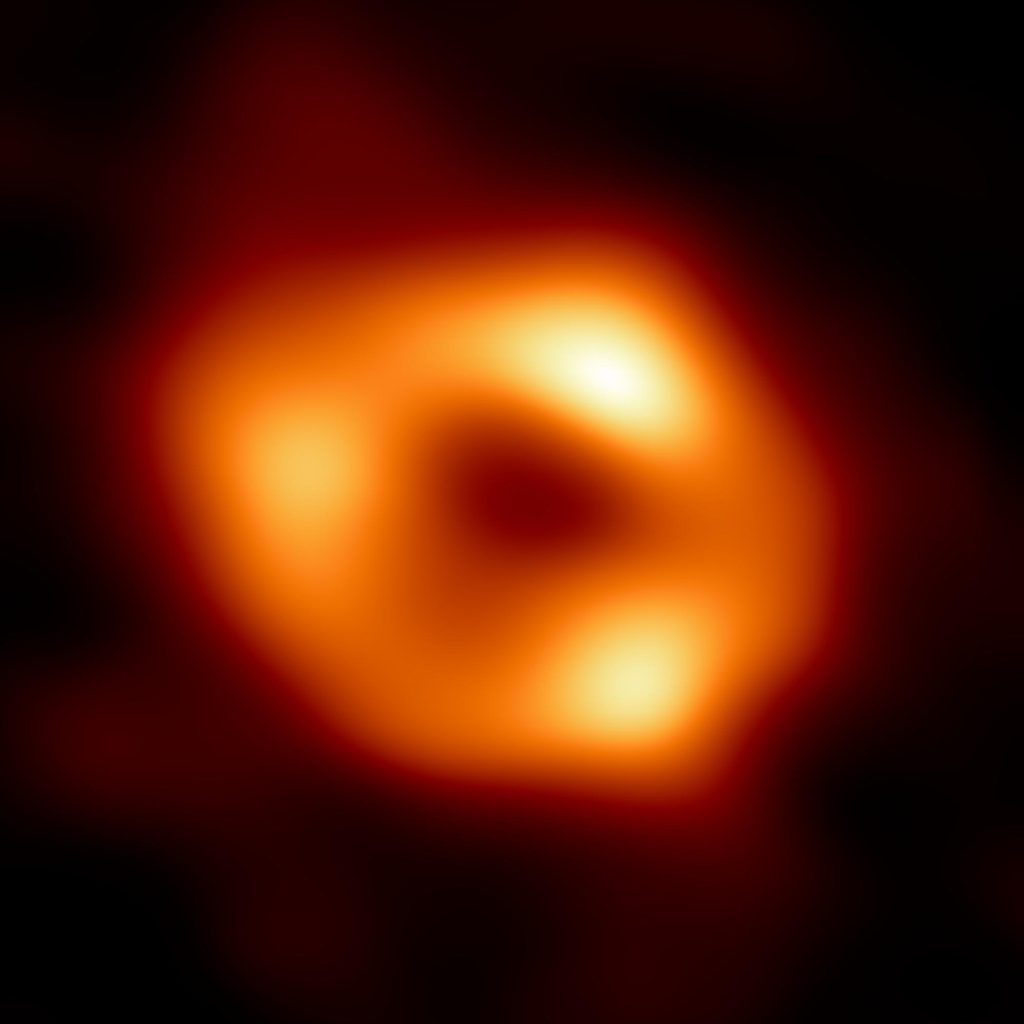In the middle of our galaxy is a hidden black hole that has been hunted for decades. Now he’s been given one last face, in the form of a portrait that took five years to develop.
Today the world is introduced to the dark heart of the Milky Way. An image of the black hole that forms the center of our galaxy was revealed this afternoon at the European Southern Observatory’s headquarters near Munich. This black hole has been hunted and researched for decades, and it was only recently that astronomers confirmed that it actually existed. If there were any doubts about this, it completely disappeared with this photo. Hail Sagittarius A*, ruler of the Milky Way, the eternal center of the star’s dance.
† Nobel Prize for the trio who explored ‘the darkest mysteries of the universe’
1 Why is this considered such a force?
Like the first image of a black hole, which was world news three years ago, this image was also taken using the so-called Event Horizon Telescope (EHT). Or rather, it was configured with him, because the EHT is not a real telescope, but a constellation of eight radio telescopes scattered around the world. Together they make up a virtual radio telescope, with an imaginary Earth-sized satellite dish. The radio waves that make up the image were captured during a 10-day observation campaign in April 2017. So the image shows what Sagittarius A* looked like five years ago in the constellation Sagittarius (which the name black hole refers to). The fact that it took so long to develop the image – the second image of a black hole – shows what a feat it is to photograph black holes.
2 What exactly is a black hole?
A black hole is the strangest thing in the universe. Its attraction is so great that even light cannot escape it. Although a “hole” refers to a point with infinite mass density (where the equations of Einstein’s theory of relativity tend), black holes are usually measured by their event horizon. Nothing beyond this limit escapes the intense gravity.
3 How is that, black? And that orange and yellow?
In the image of Sagittarius A*, the event horizon casts a shadow over the immediate vicinity of the black hole. Hence the circular dark spot in the middle of the orange-yellow ring, which was formed by the radiation of matter orbiting the black hole at tremendous speeds. Enormous frictional forces turned this material into a glowing plasma, engulfing the entire environment in radiation. The arc event horizon A* forms a spherical shape with a diameter of six million km. This is about fifteen times the distance from the Earth to the Moon.
4 Why did it take five years?
In fact, in 2019, Sagittarius A* was supposed to be the first to appear on camera as the first ever black hole, not M87*, which is 55 million light-years away and not even part of the Milky Way. This is while the distance to our black hole is only 27,000 light-years. But despite its closeness, Sagittarius A* has the disadvantage (to photographers) that it is much lighter than M87*, with a difference of four million compared to a whopping 6.5 billion solar masses. The larger the black hole, the wider the event horizon, and thus the greater its size. Thus, the terribly large M87* is relatively stable. The radioactive substance takes weeks to spin around, while with arc A* it takes half an hour at most. And what applies to humans, also applies to black holes: they must remain still for some time when they are being photographed, ideally longer than their shutter speed. With an EHT telescope, it takes several hours. With the M87* this wasn’t a problem, with the bow A* it was. Thus M87* became the first black hole imaged, the image taken around the world on April 10, 2019 – the now-famous image, by the way, was made up of radio waves captured during the same observational campaign in 2017.
But the hundreds of radio astronomers and technicians on the EHT team haven’t stopped working since then. Despite the highly variable nature of Sagittarius A*, they have found a way to develop a more or less sharp picture of this black hole as well. Five years later, it was finally completed.

Photo: ESO/M.

“Thinker. Coffeeaholic. Award-winning gamer. Web trailblazer. Pop culture scholar. Beer guru. Food specialist.”







More Stories
Comet Tsuchinshan-Atlas is ready to shine this fall
Sonos isn’t bringing back its old app after all
Indiana Jones and the Great Circle is coming to PS5 in spring 2025